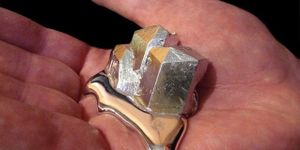Scientists Link Ancient Worm With Fossil of 500 Million-Year-Old 'Seaweed'
Fossils uncovered from the ocean floor in Marble Canyon, a location in Kootenay National Park in British Columbia, Canada, tell a story of 500 million-year-old seaweed-like tube structures that were the homes of small worm-like creatures.
Those worm-like creatures were actually an ancient species that have reportedly been known about since the 1910’s and 1920’s, dubbed Oesia disjuncta. Unfortunately, little has been known about them because of their rarity and our lack of specimens to study.
Scientists also didn’t know anything about where they may have swelled, until now, that is.

Image Credit: Marianne Collins
According to the study, which was published in the journal BMC Biology, each single tube-like seaweed structure reportedly housed one of these worm-like specimens. This would suggest that each tube would only fit one worm and that they likely sealed themselves into these tubes to live secluded lives, where they later died in place.
With these fossils, scientists now have a much better representation of the species and how they may have lived. They “are far more abundant and better preserved, giving us unprecedented details of the animal's internal anatomy,” study co-author Jean-Bernard Caron said in a statement.
Because it was always a mystery of where exactly these worms called home, this is a light-shedding study that opens new realms of research into the history of the species. The fossils provide evidence that is so well-preserved that it could end an ongoing debate about the species.
“Who’d have ever expected something which people thought was seaweed was actually a tube,” Simon Conway Morris, paleontologist at Cambridge University and an author of the study, said. “And who would have thought this interesting type of worm would build a tube?”
By getting to see a well-preserved fossil for the first time, new information has been uncovered about the taxonomy of the creatures. Rather than being tied to the earthworm or leech family tree, they were likely more closely related to sea stars and sea cucumbers, joining them in an animal group known as Hemichordates.
Source: Live Science, New York Times








